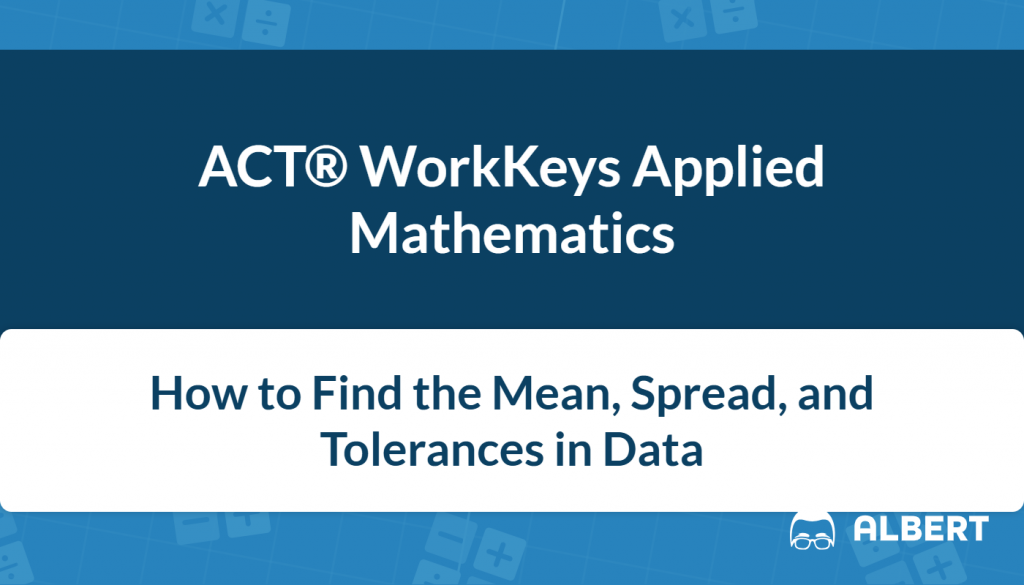Understanding central tendency, spread, and tolerances in data is essential for practical data analysis. You might wonder how to find the mean, how to find the median, and what the range is. These concepts help us summarize and interpret complex information.
In this article, we will carefully break down these fundamental ideas into manageable parts. Throughout the discussion, you will gain practical methods that can be effectively applied in various scenarios. By the end of this article, you will understand these important math concepts and know how to use them in real-life situations.
What We Review
The Essence of Central Tendency in Data Analysis
Central tendency measures show the “center” of a group of data. They provide an average point that represents the whole set.
These measures simplify complex data. By reducing data to one value, they aid in comparing different sets, help identify trends, and make predictions. Thus, understanding central tendency is essential for effective data analysis.
How to Find the Mean: The Balancing Point of Data
The mean is the average of a group of numbers. It provides a “central” value by balancing all data points. Finding the mean involves a simple process:
- Add up all the numbers in the data set.
- Divide the sum by the total number of values.
This calculation gives us one number that represents the entire data set, serving as a clear point for comparison. Nonetheless, the mean is affected by extreme values, which can skew its interpretation.
Median: The Middle Ground of Data Sets
The median is a way to find the center of a set of numbers. It represents the middle value of an ordered data set. Unlike the mean, the median is not affected by extreme values:
- Arrange the data set in numerical order.
- Identify the middle number in the ordered list.
- If the set has an even number of values, take the average of the two middle numbers.
The median is a strong measure of central tendency, especially in skewed, or uneven, distributions. It accurately represents the center of the data.
Mode: Identifying the Most Common Data Points
The mode is the number that appears most often in a set of data. To find the mode, follow these steps:
- Count how many times each number appears.
- Look for the number that appears the most.
A data set may have a single mode, multiple modes, or no mode. The mode is useful in understanding data when numbers alone aren’t the best measure. Identifying the mode can reveal patterns and variations within the data.
Example: How to Find the Mean, Median, and Mode
Let’s consider a set of test scores from a group of students in a math class:
Test Scores: 85, 92, 75, 88, 92, 78, 95, 85, 88
Step 1: Finding the Mean
To calculate the mean, follow these steps:
- Add up all the scores:
- 85 + 92 + 75 + 88 + 92 + 78 + 95 + 85 + 88 = 88.33
- The sum of the test scores is 788.
- Divide the total by the number of scores:
- \text{Mean} = \frac{\text{Total Sum}}{\text{Number of Scores}} = \frac{788}{9} \approx 87.56
Mean = 87.56
Step 2: Finding the Median
To find the median, first, we need to arrange the scores in ascending order:
Ordered Test Scores: 75, 78, 85, 85, 88, 88, 92, 92, 95
Since there are 9 scores (an odd number), the median is the middle score:
- The 5th score in the ordered list is 88.
Median = 88
Step 3: Finding the Mode
The mode is the number that appears most frequently in the set of scores.
- Looking at the ordered scores: 75, 78, 85, 85, 88, 88, 92, 92, 95
- The numbers 85 and 88 each appear twice, while other scores appear only once.
Modes = 85 and 88 (This data set is bimodal since it has two modes)
Summary of Results
- Mean: 87.56
- Median: 88
- Modes: 85 and 88
This example illustrates how to find the mean, median, and mode from a set of data.
Understanding Spread: How to Measure Data Variation
Data spread shows how values in a data set vary. It helps us understand differences and similarities within the data.
When we examine spread, we observe how individual data points relate to the average. This insight aids in making more informed decisions about the data’s reliability. Typical methods to assess spread include range, variance, standard deviation, and interquartile range.
What is Range in Data Analysis?
The range is the difference between the smallest and largest values. Calculating the range involves:
- Identifying the smallest data point.
- Determining the largest data point.
- Subtracting the smallest value from the largest value.
The range provides a quick overview of data spread, but it has its limits. It is very affected by extreme values, which can inflate the perceived variability. However, despite these limitations, the range is still a helpful initial measure.
Variance and Standard Deviation: Gauging Data Dispersion
Variance measures how far each number in a set is from the average (mean) and indicates the data’s spread. The standard deviation, the square root of the variance, shows the average distance of values from the mean.
To calculate these values:
- Calculate the mean of the data set.
- Subtract the mean from each number and square the result.
- Average these squared differences for the variance.
- Take the square root of the variance to find the standard deviation.
Standard deviation is useful for understanding how closely the data points are grouped or how widely they are spread.
Interquartile Range (IQR): A Robust Measure of Spread
The interquartile range (IQR) measures the range of the middle 50%. To calculate the IQR:
- Order the data set numerically.
- Find the lower quartile (25th percentile) and upper quartile (75th percentile).
- The lower quartile is the median of the bottom half of the data and the upper quartile is the median of the upper half of the data
- Subtract the lower quartile from the upper quartile.
The IQR helps limit the effect of outliers. It gives a better view of how spread out the data is, especially in uneven distributions. Its reliability makes it a favored measure for evaluating data variability.
Example: Finding the Range and Interquartile Range (IQR)
Using the same set of test scores from a group of students:
Test Scores: 85, 92, 75, 88, 92, 78, 95, 85, 88
Step 1: Finding the Range
To find the range, follow these steps:
- Identify the smallest and largest scores in the data set:
- Smallest score: 75
- Largest score: 95
- Subtract the smallest score from the largest score:
- \text{Range} = \text{Largest Score} - \text{Smallest Score} = 95 - 75 = 20
Range = 20
Step 2: Finding the Interquartile Range (IQR)
The interquartile range (IQR) measures the middle 50% of the data and is calculated as follows:
- Order the test scores: (already ordered in the previous example)
- Ordered Test Scores: 75, 78, 85, 85, 88, 88, 92, 92, 95
- Find the first quartile (Q1):
- Q1 is the median of the first half of the data (the lower half). The lower half (without including the median) is: 75, 78, 85, 85
- The median of this subset (Q1) is the average of the 2nd and 3rd values: Q1 = \frac{78 + 85}{2} = \frac{163}{2} = 81.5
- Find the third quartile (Q3):
- Q3 is the median of the second half of the data (the upper half). The upper half (without including the median) is: 88, 92, 92, 95
- The median of this subset (Q3) is the average of the 2nd and 3rd values: Q3 = \frac{92 + 92}{2} = \frac{184}{2} = 92
- Calculate the IQR:
- \text{IQR} = Q3 - Q1 = 92 - 81.5 = 10.5
Summary of Results
- Range: 20
- Interquartile Range (IQR): 10.5
This example demonstrates how to find the range and interquartile range (IQR) from a set of data.
Tolerances in Data: Setting the Limits
Tolerances define acceptable variation in data. They specify upper and lower limits within which data should lie. Properly set tolerances ensure product consistency and efficiency.
In practice, tolerances help determine whether processes meet specified criteria. They facilitate identifying discrepancies and making adjustments. Accurate tolerances enhance decision-making in quality assessment.
Standard deviation is used to help determine statistical tolerances. It quantifies data variability, aiding in setting realistic limits. By understanding data spread, we set tolerances aligned with natural variability.
Visualizing Data: Histograms, Box Plots, and Beyond

Visualizing data effectively is key to grasping its features. Graphical representations, like histograms and box plots, make patterns and trends visible. These tools highlight central tendency, spread, and outliers effortlessly.
Histograms reveal data distribution and frequency, clearly showing spread and skewness. Box plots summarize data through quartiles, helping visualize variability and detect potential outliers. Together, they provide a comprehensive data analysis.
Real-World Applications: Central Tendency, Spread, and Tolerances
Central tendency, spread, and tolerances are used in various fields.
In manufacturing, tolerances ensure products meet quality standards and reduce defects. In finance, analysts use mean and variance to evaluate investment risks and returns. Healthcare professionals apply these concepts to analyze medical data, such as patient vitals. This helps determine normal ranges, identify anomalies, and make informed treatment decisions.
Conclusion: The Power of Combining Measures
In conclusion, grasping the concepts of central tendency, spread, and tolerances is vital for effective data analysis. We have explored how to find the mean and how to find the median, both essential measures for summarizing data sets. Additionally, understanding what is range allows us to assess the variability within our data.
Combining these ideas can enhance your problem-solving skills and help you make better decisions based on data insights.
Sharpen Your Skills for ACT® WorkKeys Applied Math
Are you preparing for the ACT® WorkKeys Applied Math test? We’ve got you covered! Try our review articles designed to help you confidently tackle real-world math problems. You’ll find everything you need to succeed, from quick tips to detailed strategies. Start exploring now!
Need help preparing for the ACT® WorkKeys Applied Math Test?
Albert has hundreds of ACT® WorkKeys practice questions and full-length practice tests to try out.








